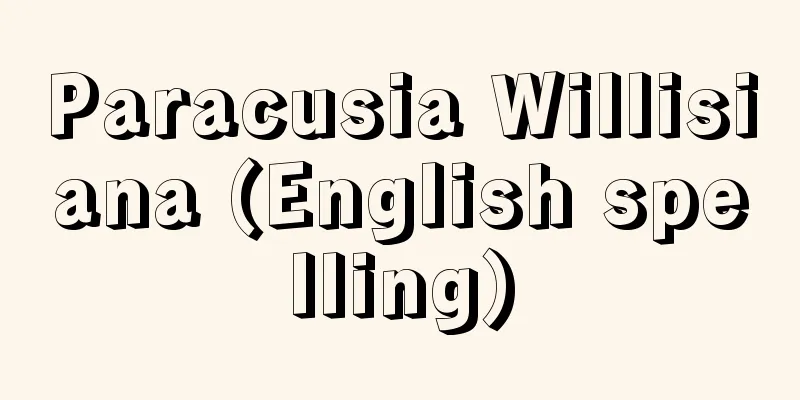Badger - Badger

|
…After graduating from middle school, he served in the Red Army, and made his debut in 1922 with the fairy-tale-like short story Buryga. After short stories with fantastical themes and a medium-length story strongly influenced by Dostoevsky, The Death of a Little Man (1924), he established his literary reputation with the long novel The Badger (1924). The Badger is a masterpiece of the post-revolutionary period, depicting the Russian Revolution as the fateful conflict between city and countryside through the fate of two brothers who are divided into allies and enemies in a peasant revolt against Communist rule. … From [Russian Literature]...Representative works on the theme of socialist construction include Serafimovich's "The Flow of Iron" (1924) and Gladkov's "Cement" (1925), while representative works on the theme of the conflict between the old and new generations include AN Tolstoy's three-part novel "Walking Through Anguish", begun in 1920 and completed in 1941, and Olesha's "Envy" (1927). Other notable works include Pilnyak (The Naked Year, 1922), Leonov (The Badger, 1924, The Thief, 1927), Ehrenburg (The Trust DE, 1923), and, as satirical masterpieces, Zoshchenko (The Tales of Sinebrukhov, 1922), Zamyatin (We, English version, 1924, Russian version, 1927), Katayev (The Wasteful, 1926), and Ilf Petrov (The Twelve Chairs, 1928, etc.). (3) The First Five-Year Plan Period (1928-1932) Socialist construction began in earnest, and in 1929 agricultural collectivization took place, bringing about serious changes in all areas of social life. … *Some of the terminology explanations that mention "Anaguma" are listed below. Source | Heibonsha World Encyclopedia 2nd Edition | Information |
|
…中学卒業後,赤軍に勤務し,1922年童話風の短編《ブルイガ》でデビューした。幻想的題材の短編やドストエフスキーの影響の強い中編《小人間の死》(1924)などを経,長編《穴熊》(1924)で文名を確立した。《穴熊》は,共産党支配に抗する農民反乱の中で敵味方に分かれる兄弟の運命を通して,都市と農村の宿命的対立という形でロシア革命をとらえた作品で,革命後の傑作である。… 【ロシア文学】より…社会主義建設をテーマにしたものはセラフィモービチ《鉄の流れ》(1924),グラトコフ《セメント》(1925),新旧世代の相克をテーマにしたものはA.N.トルストイの1920年に書き始められ,41年に完成した長編三部作《苦悩の中を行く》,オレーシャ《羨望》(1927)などが代表作である。このほかピリニャーク(《裸の年》1922),レオーノフ(《穴熊》1924,《泥棒》1927),エレンブルグ(《トラストD.E.》1923),風刺文学の傑作としてゾシチェンコ(《シネブリューホフ物語》1922),ザミャーチン(《われら》英語版1924,ロシア語版1927),カターエフ(《浪費家》1926),イリフ・ペトロフ(《12の椅子》1928など)の名をあげておく必要がある。(3)第1次五ヵ年計画期(1928‐1932) 社会主義建設が本格的に開始され,1929年には農業集団化が行われて社会生活のあらゆる領域で深刻な変化が起こった。… ※「《穴熊》」について言及している用語解説の一部を掲載しています。 出典|株式会社平凡社世界大百科事典 第2版について | 情報 |
Recommend
Uraninite (Uraninite)
One of the most basic uranium minerals. Ideal chem...
Mikihiko Nagata
Novelist. Born in Kojimachi, Tokyo. Influenced by...
spodumene
…Also called spodumene, NaFe 3+ Si 2 O 6 (aegirin...
Istros
… [Hirakawa Kazuomi] [History of use] Throughout ...
Krasnov, PN
…Ataman was the wealthy upper class (startshina),...
Cumulative Book Index
...In 1977, the Index Society was founded in the ...
Biot, Jean-Baptiste
Born: April 21, 1774 in Paris Died: February 3, 18...
Malus tschonoskii (English spelling)
…[Yamanaka Futoshi]. … *Some of the terminology t...
The Weeper
…Thus, while the works of Anglican poets maintain...
Sveinsson, A.
...However, in terms of visual arts, not many not...
Harlow, HF (English spelling) HarlowHF
...In the mother-child relationship, the mother&#...
Pectin
It is a type of non-cellulosic polysaccharide pec...
happy-ending
…It is a commonly used theatrical term, especiall...
Okada Tamechika
Year of death: May 5, 1864 (June 8, 1864) Year of ...
Medical services - Iryo Service
...The World Health Organization (WHO) also inclu...








![A cappella (English spelling) a cappella [Italy]](/upload/images/67cad106de07a.webp)
